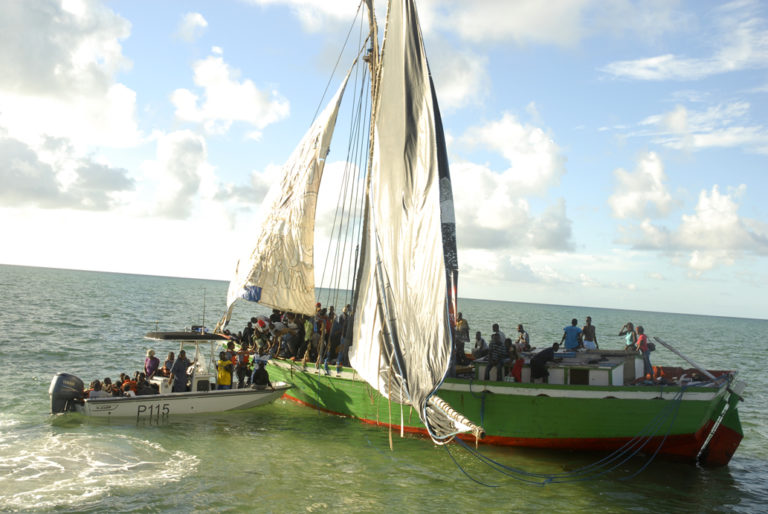Releases strategy to address human smuggling through decentralization program
NASSAU, BAHAMAS – The vessel used in the latest boating tragedy which saw the loss of 31 Haitian migrants earlier this month off mainland Abaco, is a classic example of how trends and patterns have changed when it comes to illegal migration, the Royal Bahamas Defence Force (RBDF) revealed on Tuesday.
“It was not one of the traditional wooden sloops normally used for smuggling, but rather a modern 40-foot sailing yacht commonly used by hundreds of visitors to The Bahamas, making it difficult for authorities to distinguish it as a human smuggling vessel,” the RBDF said.
“Additionally, the passage taken by this vessel could have very well been an irregular one off the eastern coast of our islands in the Atlantic Ocean.”
These and other details were revealed yesterday by the RBDF in a statement that outlined strategies for addressing human smuggling throughout The Bahamas with its ongoing decentralization program.
The decentralization program is designed to sustain the Force’s presence at strategic locations throughout The Bahamas and will also reduce maintenance requirements on Defence Force ships and machinery, as well as limit undue stress on ships’ personnel when on 24/7 patrol assignments.
The program also involves the acquisition of ships, dredging of harbours, construction of quaywalls and jetties, expansion and/or construction of bases, the acquisition of detection and tracking technologies, and the strengthening of security cooperation with local and regional partners.
The RBDF said although it conducts patrols on short rotations in the southern Bahamas as part of its short term strategy, it is simultaneously unfolding its decentralization program through a multi-layered security approach.
According to the RBDF, New Providence-centric operations are time-consuming, ineffective and create much unnecessary wear and tear on ships and personnel for operations in the southern or northern Bahamas.
“The Defence Force’s decentralization program, therefore, requires the establishment of regional commands with fully operational bases at strategic locations in these areas over the next five years,” the RBDF said.
The nine ships that were acquired and the three major harbours that were dredged under the $232 million dollar Sandy Bottom Project during the period 2014 – 2017 constituted the first phase of the Defence Force’s decentralization program.
The second and third phases of the program consists of the establishment of bases and the acquisition of detection and tracking technologies for the effective and efficient policing of Bahamian borders.
The RBDF said an effective decentralization program should therefore incorporate a multi-layered security approach consisting of ships, aircraft, radars, drones, Automated Identification Systems (AIS), Forward Looking Infra-Red Cameras, CCTVs, space satellites, and other detection equipment to enhance operational effectiveness.
In essence, the RBDF said it believes that decentralization is a long term, sustainable solution that facilitates the implementation of short term measures by the Defence Force in rolling back a diverse number of illicit activities.
“Additionally, this approach allows the Defence Force to provide necessary assistance to civilian authorities such as police, customs, immigration, the Department of Correctional Services, the National Emergency Management Agency and others,” the RBDF said.
Thus far for 2019, the RBDF has apprehended or assisted in apprehending a total of 207 Haitian nationals. This number, however, excludes the 31 bodies recovered from waters off Abaco after the migrants’ 40-foot conventional yacht struck a reef and sank on February 2.
Last year, the RBDF apprehended or assisted in apprehending 1,172 Haitians. And also last year, approximately 200 Dominicans were apprehended by the RBDF aboard five motherships.


